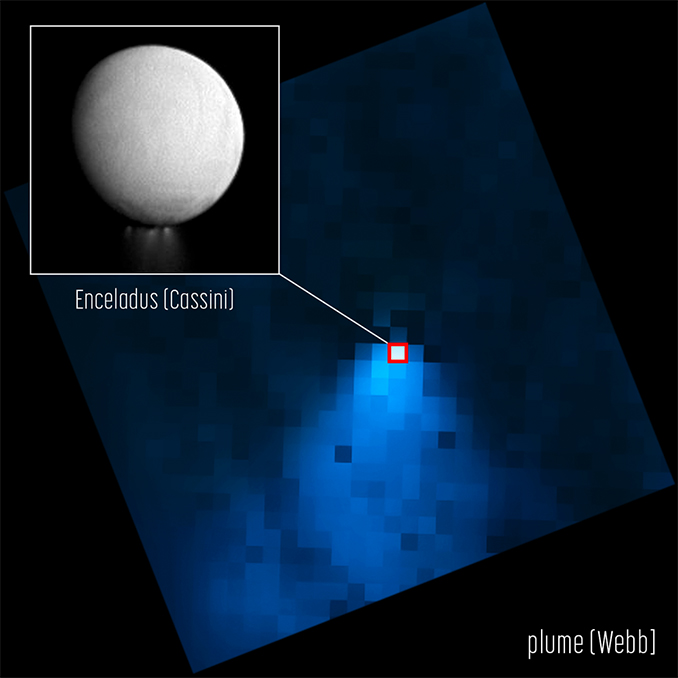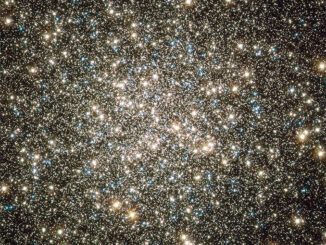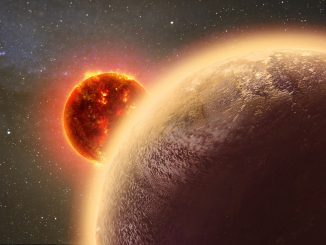
Using the sensitivity of the James Webb Space Telescope, astronomers have managed to detect a vast plume of water vapour spewing from the southern pole of Saturn’s moon Enceladus, a jet extending nearly 10,000 kilometres (6,000 miles) and feeding a previously detected torus circling the entire planet.
Water vapour from a presumed sub-surface ocean below the icy crust of Enceladus has been seen before in striking images collected by the Cassini Saturn orbiter, but never at the scale revealed by Webb. The observations indicate the water vapour is spewing out at 300 litres (79 gallons) per second.
“When I was looking at the data, at first, I was thinking I had to be wrong,” said Geronimo Villanueva of NASA’s Goddard Space Flight Center, lead author of a paper accepted by Nature Astronomy. “It was just so shocking to detect a water plume more than 20 times the size of the moon. The water plume extends far beyond its release region at the southern pole.”
Enceladus is just 4 percent the size of Earth with a diameter of about 500 kilometres (313 miles). It is believed to harbour a global ocean of salty water sandwiched between a rocky core and an iced-over outer crust, making it a prime target for future searches for life beyond Earth. Water vapour, ice particles and organic compounds constantly spew from crevices in the ice near the moon’s south pole.
“The orbit of Enceladus around Saturn is relatively quick, just 33 hours,” Villanueva said. “As it whips around Saturn, the moon and its jets are basically spitting off water, leaving a halo, almost like a donut, in its wake. In the Webb observations, not only was the plume huge, but there was just water absolutely everywhere.”
The torus of water vapour being fed by the geysers on Enceladus is co-located with Saturn’s dense, outermost E ring. The Webb observations show about 30 percent of the water stays in the torus while the rest escapes to feed the rest of the Saturn system.



